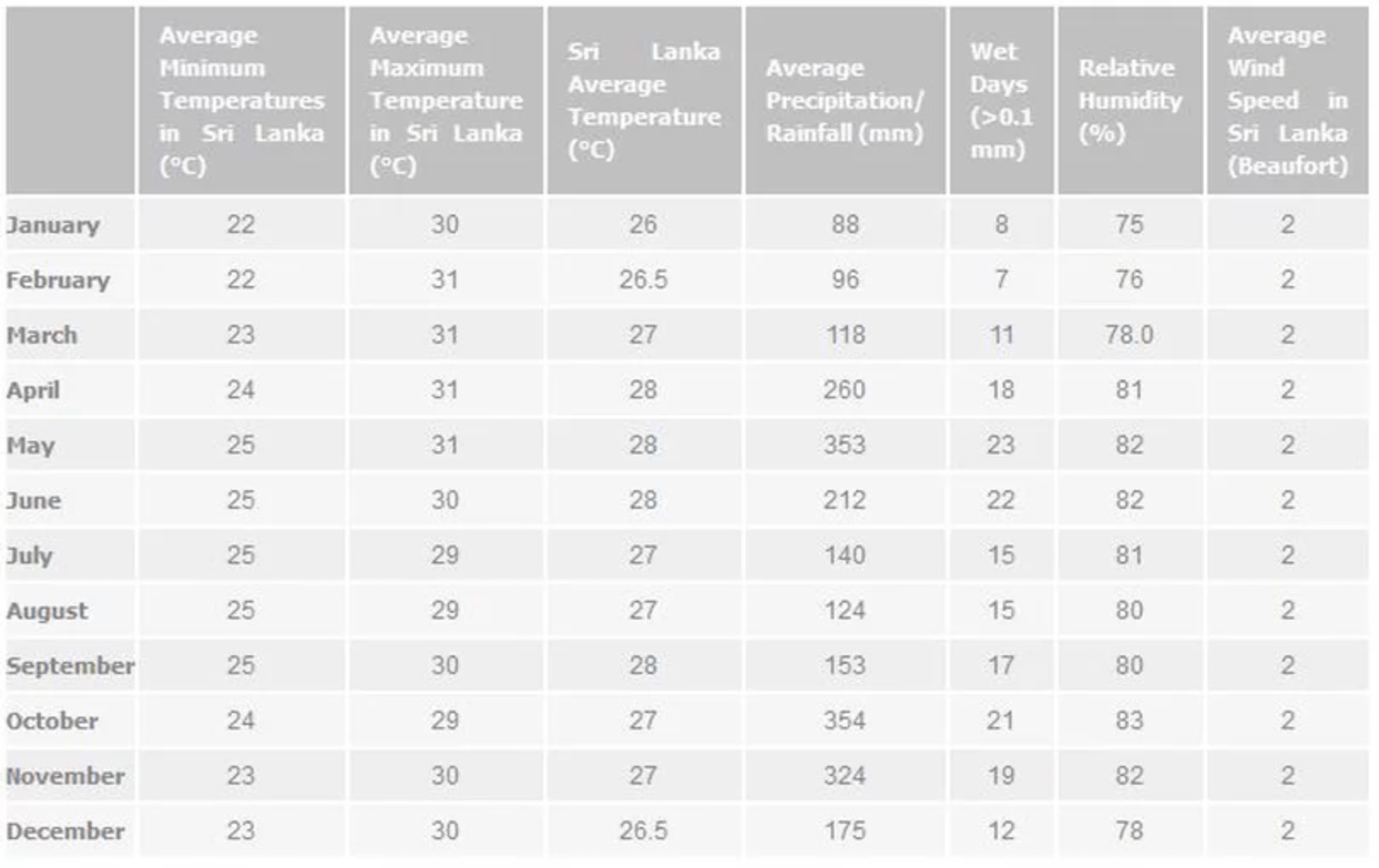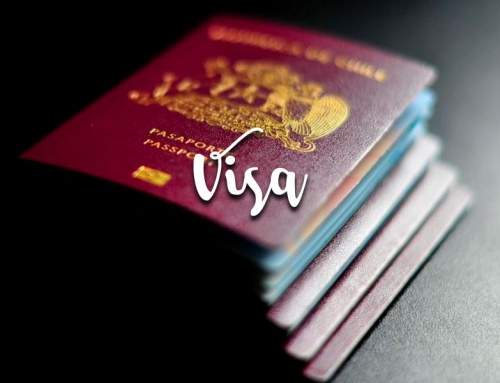Sri Lanka climate is tropical and consists of distinct wet and dry seasons. The Yala monsoon brings abundant rainfall to the country’s western and southern regions from May to September; the area experiences its dry season during December through March. Altogether, the southwest receives around 4000mm of rainfall each year. The Maha monsoon affects northern and eastern Sri Lanka weather and often lasts from October to January, with the dry season usually lasting from May to September. This region receives approximately 1000mm of precipitation annually, significantly less than the other half of the country. There is also an inter-monsoonal period in October and November during which rain and thunderstorms occur frequently across the island.
Generally speaking, upland areas of Sri Lanka are cooler and more temperate, with a yearly average around 16-20ºC (60-68ºF), and coastal areas are warmer with average temperatures around 27ºC (80ºF). The March-June season experiences slightly higher temperatures (up to 33ºC / 92ºF), while the temperatures in November-January are a few degrees lower (around 24ºC / 75ºF at the coast). Sri Lanka weather along the shores is made more comfortable by cooling sea breezes. The surrounding sea remains rather constant at roughly 27ºC (80ºF) year-round. Humidity is typically rather high in Sri Lanka, averaging out at around 80% year-round.
As the nation is located in the tropics, Sri Lanka weather can be severely affected by an El Niño. Though this irregular climate change only occurs around every three to seven years, the area’s weather can be altered for an extended time in effect. In the presence of a strong El Niño, expect a chance of drought conditions during the March-August months and possible flooding September-November. Floods regularly hit Sri Lanka, particularly in the southwestern region, so it may be wise to avoid the area during the wet season.
Sri Lanka climate can be at its most enjoyable in the drier seasons; the best time to travel to the west, south and upland areas of the island is during December to March, while the recommended travel season for the east coast region is April to September.
The most popular season for tourism is between December and March, when the country attracts Europeans fleeing the Northern Hemisphere’s winter weather. Christmas and the New Year are particularly popular for a Sri Lankan holiday, while July and August represent festival season on the island – if travelling during either time it is recommended to book well in advance to guarantee accommodation.
The island is certainly a year-round destination as there is usually one region of the country experiencing good weather, while others are hit by poorer conditions. The diverse topography of Sri Lanka allows for balmy beach holidays on the east coast from April to November, while the west is ideal for hitting the beach from December to March. However, be aware that Sri Lanka weather can be unpredictable during any season.
Best time to visit
The western and southern areas experience their monsoon season during May to September while the northern and eastern areas are affected by the monsoon between October to January. The recommended time for a Sri Lankan getaway is during either coast’s dry season – April to November for the eastern coast and December to March for the west coast and central highlands.








